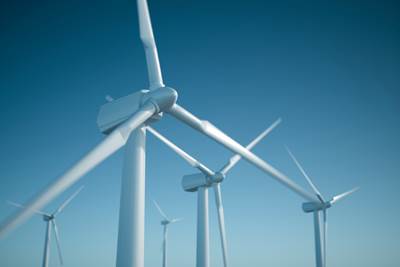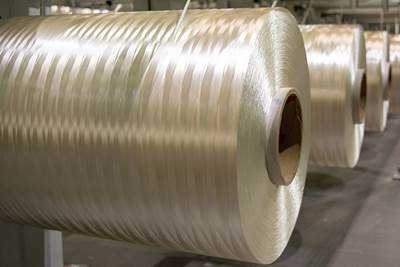Carbon Fiber 2023: See you there
CompositesWorld’s Carbon Fiber Conference, in its 26th year, will be held Nov. 28-30 in Salt Lake City, Utah, U.S. There are many good reasons to attend.
I attended my first CompositesWorld Carbon Fiber Conference in December 2007. At the time, the Boeing 787 and the Airbus A350 were in the late stages of their development but not yet in service, and the F-35 was in the early stages of production and being flight-tested.
What emerged during this time — 2007-2015 — was a strong sense of optimism about carbon fiber’s future. If we could break through in major structures in the commercial aircraft market, what else might we accomplish? Each year at the Carbon Fiber Conference, aspirations shifted and evolved. One year, it was the oil and gas industry that we pointed to as the “next big market.” Another year it was the high-volume automotive market.
In the background was the wind energy market which, as 2010 approached, was about to begin its multiyear global expansion. At the time, wind blades were the largest consumer of composite materials in the world, but widespread application of carbon fiber in blades was still several years away.
Most of the time, the future of carbon fiber seemed bright, enjoying an air of supremacy conveyed by its high-profile successes in aerospace, wind and (some) automotive applications. This, in turn, fueled interest by other OEMs, markets and applications, eager to put carbon fiber’s low weight and high strength to work in a new part or structure.
Weight savings vs. sustainability
Carbon fiber’s — and the entire industry’s — primary selling point up until the last few years has revolved almost exclusively around the virtue of weight savings, which in turn contributes to reduced energy use.
When COVID-19 hit, one of the side effects of coping with a global pandemic was a rededication by governments and the business community to address the challenges of climate change. This stimulated throughout the manufacturing world a focus on sustainability and decarbonization.
Because of this, suddenly the phrase “yes…but…” started infecting conversation about carbon fiber’s benefits: “Yes, carbon fiber enables weight savings, but it’s carbon footprint is terrible.” Indeed, carbon fiber manufacture is a notoriously energy-demanding process that requires use of a petroleum-based precursor — polyacrylonitrile. Carbon fiber producers found themselves faced with the unenviable challenge of simultaneously decarbonizing their manufacturing operations while proving carbon fiber’s ultimate value as a decarbonizer itself.
On top of this, spurred on in part by the global effort to decarbonize, there are new or fast-growing markets that not only might use carbon fiber, but absolutely need carbon fiber to exist. I am thinking specifically of hydrogen storage, advanced air mobility (AAM), new space and, of course, wind energy. Conversely, in aerospace, there is no new commercial aircraft program on the horizon to gobble up carbon fiber. In this way, the status quo we’ve come to know and love, dominated by commercial aerospace, is being displaced by an unusual mix of new markets and applications and cries for decarbonization.
How the Carbon Fiber Conference can help
You will find many of these market and technology factors on full display from Nov. 28-30 at the 26th annual Carbon Fiber Conference in Salt Lake City, Utah, U.S. The editors of CW have put together a robust agenda that addresses many of the challenges the industry faces.
Consider first the Pre-Conference Seminar, on Nov. 28, which will offer insights and analysis on carbon fiber’s future in the wind energy market, aerospace and carbon fiber manufacture in China. We will also present, as we have in the past, a forecast of carbon fiber supply and demand for the next several years.
On Nov. 29, we have presentations that will address sustainability in carbon fiber manufacture, the commoditization of carbon fiber, carbon fiber in the hydrogen economy and the use of carbon fiber in additive manufacturing applications. On Nov. 30, a panel of subject-matter experts will address carbon fiber’s role in submersibles development, with a special focus on the OceanGate Titan accident last summer. We will also feature presentations on carbon fiber use in high-volume electronics applications, carbon fiber recycling and the outlook for carbon fiber use in AAM.
In addition, the conference features exhibitors representing many segments of the carbon fiber supply chain, as well as many networking opportunities.
I encourage you to visit www.carbonfiberevent.com for more information and to register. And I hope to see you in Salt Lake City.
Related Content
Moving toward next-generation wind blade recycling
Suppliers, fabricators and OEMs across the composite wind blade supply chain ramp up existing technologies, develop better reclamation methods and design more recyclable wind blades.
Read MoreMaterials & Processes: Fabrication methods
There are numerous methods for fabricating composite components. Selection of a method for a particular part, therefore, will depend on the materials, the part design and end-use or application. Here's a guide to selection.
Read MoreJEC World 2022, Part 1: Highlights in sustainable, digital, industrialized composites
JEC World 2022 offered numerous new developments in composites materials, processes and applications, according to CW senior editor, Ginger Gardiner, most targeting improved sustainability for wider applications.
Read MorePlant tour: ÉireComposites, Galway, Ireland
An in-house testing business and R&D focus has led to innovative materials use and projects in a range of markets, from civil aerospace to renewable energy to marine.
Read MoreRead Next
Celebrating 30 years of CompositesWorld, Part 2
CW covers key composite developments that have taken place from the 1990s to today in the second part of this two-part retrospective.
Read MoreBio-based acrylonitrile for carbon fiber manufacture
The quest for a sustainable source of acrylonitrile for carbon fiber manufacture has made the leap from the lab to the market.
Read MoreCW’s 2024 Top Shops survey offers new approach to benchmarking
Respondents that complete the survey by April 30, 2024, have the chance to be recognized as an honoree.
Read More















.jpg;maxWidth=300;quality=90)











